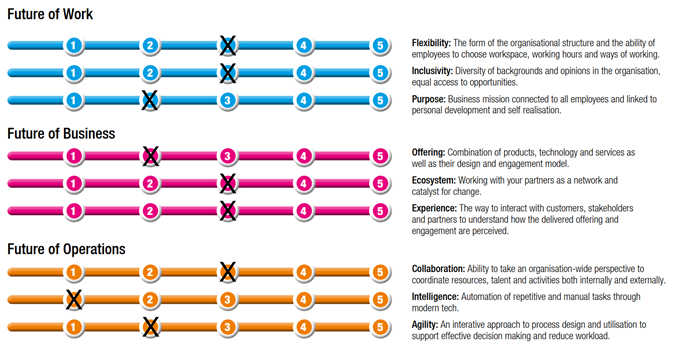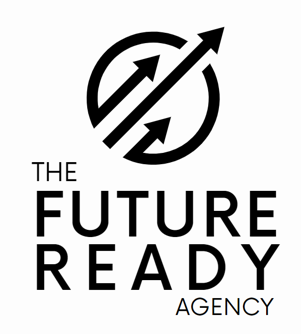Cathy Ward, Operating Partner at Keensight Capital and Founder of the Future Ready Agency, is giving our keynote talk at Global Sales Transformation XVIII on 6th December, so we've prepared a summary of her Future Readiness Framework. Stay tuned for Part 2 of this series where we'll go into more detail on the implementation of the framework.
Recent years have made the need to be prepared for the future clearer than ever. As well as the changes caused by the Covid 19 pandemic, businesses have also had to respond to massive developments in technology, politics, and the global economic climate.
Cathy Ward saw this need clearly as she began a new role as Regional Chief Operating Officer at SAP Asia Pacific Japan in 2021. So clearly, in fact that she pitched the idea that the role of Chief Operating Officer needed to transform into the “Chief Anticipation Officer”. She was initially met with resistance – didn’t the COO have enough problems in the present to worry about without thinking about the future?
Despite this, Cathy still wanted to explore this idea further. To gather more evidence she partnered with the Harvard Business Review in 2022 on a six-month project surveying 442 business leaders. A whopping 87% said it was “very important” that businesses have an adaptive culture that could anticipate future disruptions, yet only 29% said their organisations were ready for these disruptions.
Why do companies find it so hard to talk about the future?
If so many senior leaders were acknowledging the importance of this issue, why were they not doing anything about it? Cathy summed it up simply: they didn’t know where to start. They were on certain ground with today’s best practices and knowing what “good” looks like today. But when do best practices expire? And what will “good” look like tomorrow? These questions are much harder.
Anticipatory thinking is like a muscle, and it needs to be exercised. Organisations need to start talking about the future as part of the regular rhythms of their operations – in the same way as they talk about the past in quarterly reviews and other reporting. Most of all, Cathy identified that they needed “a common language to talk about the future”.
She saw that there were plenty of existing business practices for solving problems from the past, but no real methodology around preparing for the future. This is why she created the Future Readiness Framework – to establish a common benchmark for business maturity when it comes to future readiness.
The Dimensions of Change
The framework is based around three key areas where businesses should expect change, which are then each subdivided into three sub-topics, creating nine total “Dimensions of Change”:
Future of Work
How individuals within the organisation work.
- Flexibility – What is the organisational structure and how free are employees to choose their ways of working?
- Inclusivity – How diverse are backgrounds and opinions, and how equal are opportunities?
- Purpose – Is the company mission connected to all employees and their personal development?
Future of Business
How the organisation does business
- Offering – What is the product portfolio and what are their design and engagement models?
- Ecosystem – How does the company work with its network of external stakeholders and partners?
- Experience – How does the company interact with customers and other stakeholders, and what is their perception of the company?
Future of Operations
How the organisation operates
- Collaboration – How effectively are resources coordinated and company-wide perspectives taken into account?
- Intelligence – How is new technology being used to streamline and automate existing tasks?
- Agility – Does the organisation take an iterative approach to process design and decision making?
Business leaders are then asked to self-assess using a series of questions their organisation’s level of future readiness, which each “Dimension” being given a score out of 5. This is supplemented with qualitative interviews with senior leaders from each of the three key areas.

The benefit of this is twofold. It gives the organisation a broad sense of their level of future readiness and potential blind spots, but even the act of answering the questions itself is beneficial. It begins an honest and open conversation around future readiness by providing the basic building blocks for the discussion. Once that starts and “anticipation” enters into the organisation’s regular cadence of operations, they can then begin to develop a future-readiness roadmap.
The future of Future Readiness
The Future Readiness Framework is still emerging, and Cathy Ward hopes to work with the wider Future Readiness community to develop it further. Her end goal is to create a full “future-ready system” with an evolving library of “next practices” that will help companies prepare for whatever comes next.
To that end Cathy has founded the Future Ready Agency to continue pushing the Framework, and the Movement, forward. The need for this vital work is only going to keep growing, so we look forward to seeing the Agency take the next steps in making the world more future-ready!

Keep your eyes peeled for part 2 of this blog, where we’ll look at how organisations can take the learnings from their Future Readiness Diagnostic and turn them into real transformation.
Want to hear more from Cathy Ward and the Future Readiness movement? Join us at Global Sales Transformation XVIII on 6th December, where Cathy will be our keynote speaker. She’ll be joined by some of the brightest minds in the sales industry who will all sharing their takes on what it means to be “Future Ready”.
Tickets available now but going fast! Secure your spot today:
